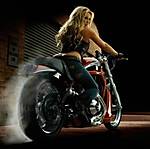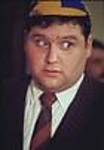Quoted Text
How do you make waterline models out of not supposed to be waterline models?
It's a pretty long process, but one that gives me a good clean result. First I mask just below the waterline with tape, taking great care to get both sides exactly the same and dead straight, then with a 1mm drill bit in my dremmel, drill along the edge of the tape at as close a interval as I can. Constantly cleaning melted plastic off the drill bit with an exacto knife slows this process down somewhat, but that way all the holes are kept the same size. I should note here that before the drilling process, any interior hull braces are cut to waterline height and glued in place, or if like my soon to be started Tamiya Yamato hull, adding my own bracing and stiffeners above the waterline area.
Once the circumference of the waterline is drilled, using a new heavy exacto blade, carefully cut between the holes or as I now do, run the Dremmel flat out and very carefully , drag the bit from hole to hole, melting a straight line. Sometimes the plastic will seal up again behind the bit, but this can be easily cut again with the blade.
Now you should have your two hull pieces. Here I will temporarily tape the deck in place on the well braced top half and carefully sand the half holes flat on my table belt sander. This part must be done slowly and light handed as it doesn't take much force to start melting the edges. After I'm satisfied that it's as flat as I can get it, clamp it on a roughly cut to shape piece of 2 or 3mm acrylic sheet, testing that the deck fits nicely (then remove deck) and glue in place. Once dried, simply trim excess base to the hulls shape.
Heres the Kongo clamped to the base. Since I had a slight rise in one end of this ship, I now add a piece of 4 x 4mm piece of wood glued to the entire interior length of the base to help keep it flat.
If you have any questions, let me know. When I start the Yamato, I will post pictures on the process to give you a better idea.

























































